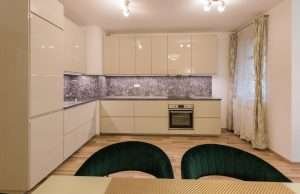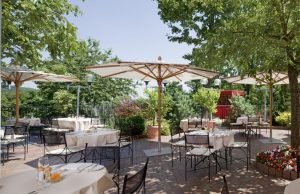Orphan Castle (Rossenstein) got its name from the Wehingen family, feudal lords of Swabian origin, one branch of which, the Orphans, moved from Austria to Moravia in the first half of the 13th century.
The ruins have a very distinctive feel. It apparently disappeared sometime before 1590. It is described as completely deserted by the surveyor from 1629. The castle was built on two jagged rock cliffs, separated by a deep ravine, from which there is access to a karst cave. The main part rested on the southern rock cliff. A front wall 2.5 m thick and 8 m high with one window has been preserved, connected to the remains of the tower with three window arches above each other.
The romantic ruins of Sirotčí hradek and its typical silhouette belong inextricably to the Pálava Hills like Romeo to Juliet. Whether you’re just passing through the area or setting out to admire the beauty of this wine-scented region, the Orphan’s Castle will peek out at you everywhere.
The small castle from the turn of the 13th and 14th centuries has a very interesting two-part layout. The castle has a more dominant appearance from the west, where it seems to have grown out of tall and slender limestone rocks. Hrádek really adapted its overall composition to the existing rocks.
The southern, better-known part of the castle is accessible from the southeast, where the entrance annex is still preserved on the southern wall. This part occupied an approximately triangular summit plateau. The masonry of this part has been preserved almost up to the height of the first floor. Only the northern wall of this part succumbed to the ravages of time. This part of the castle formed a palatial layout, with a residential part on the east side (as evidenced by a large window) and a narrowing part to the west, where a slender rounded tower culminates on a steep rock.Practically nothing survived from the second part of the castle on the inaccessible northern rock. Just a few modest sections of masonry. At the foot of the rocks lay the rampart and palisade-enclosed rampart of this castle, of which only the admired water cistern remains to this day.
You can visit the orphan castle practically at any time of the year, it is completely free to enter. The trail leads to it either directly from the village of Klentnice , above which the castle is located, or along the trail from Mikulov to Děvičky . However, the visit is really worth it.
The legend of the knight Čičos is also connected with the orphan castle, who belonged to the order of the Templars. He worked as a castellan at the castle. When his son was about to be born, Čičos received a call-up order from his order. However, due to the birth of his son, Čičos refused. Not long after that, the Komtur arrived at the castle, whom Čičos’s wife Růžena asked to act as godfather to the newly born child. According to traditional custom, the godfather chooses the child’s name. Komtur accepted the offer and named the child Orphanus – an orphan . After the birth of the child, the Komtur had Čičos executed for treason, making Orphan a true orphan. He then had all the inhabitants of the castle (except one) executed, while the widow of Čišos was heartbroken with grief. Komtur left the castle and took Orphan with him. When he returned to the castle years later, he found only one person there – an old man who once managed to escape the Komtur’s wrath. When the old man recounted to him what had happened to his parents then, Orphanus went mad, and from then on he is supposed to ride his horse from the castle to Turold at night .
Venue
- Region: South-Moravian region
Operator
The village of Klentnice
Klentnice 24
Klentnice
692 01 Mikulov
- Tel.:+420 519 515 171
- E-mail:ou@klentnice.cz
- www.klentnice.cz
- GPS:48.844042 16.644201
Admission
Price: free
Duration
3 hour










